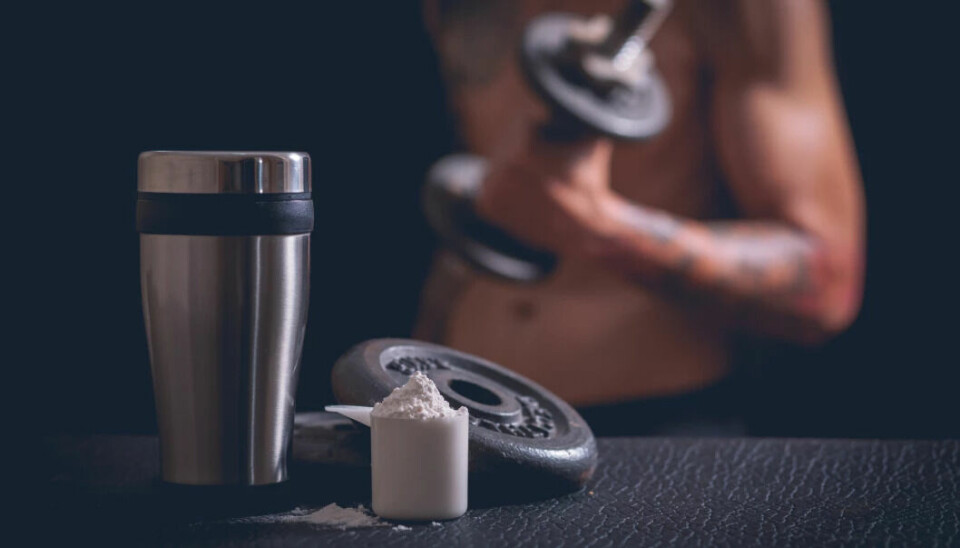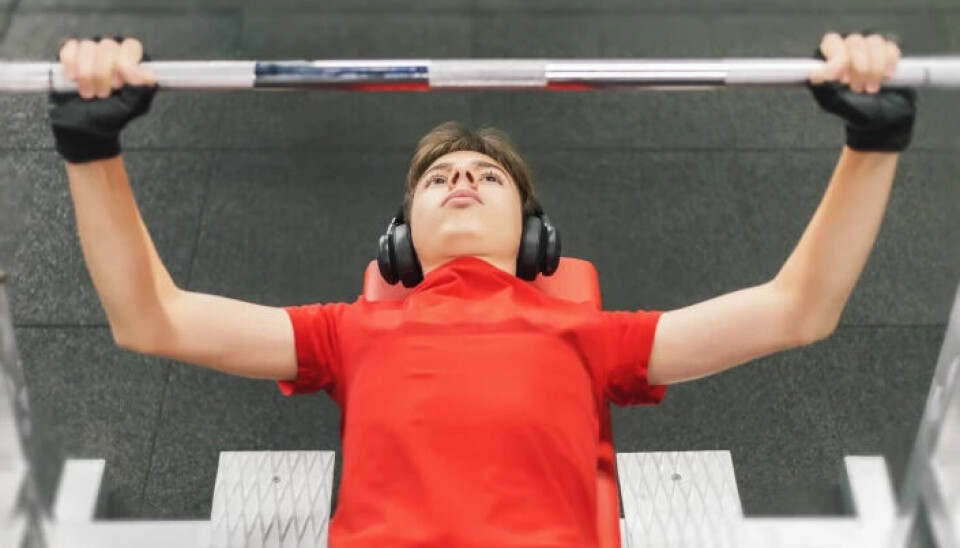
Creatine has become a popular supplement for many people who want to build muscle. But how well does it actually work?
Although the supplement has shown effects in some individuals, there are still gaps in our knowledge about it.
On the websites of those selling the supplement, creatine sounds enticing. The promise of bigger muscles and more strength, quickly and naturally, is tempting.
But how effective is it really? And is it safe?
“Creatine is one of the supplements where the effect on muscle growth and performance in training studies is most evident,” Truls Raastad tells sciencenorway.no.
He is a professor at the Norwegian School of Sport Sciences and does research on strength training and sports nutrition.
The effect of creatine is probably oversold by some fitness influencers on social media and others who promote dietary supplements. Some young people may, therefore, have unrealistic expectations about the long-term effects of using creatine.
Gaps in our knowledge
In other words, creatine works. However, Raastad believes it should not be recommended for people who are not athletes.
The reason for this will be explained later, but first, let’s understand how creatine works.
A daily dose of this supplement, combined with exercise, can lead to slightly bigger muscles and improved performance compared to just exercising alone.
Numerous studies confirm this.
The effect is due to creatine providing muscles with a readily available energy boost when they need it. You can read more about how this happens in this article.
However, this effect does not apply to everyone, and there are still some gaps in our knowledge about the substance.
The effect is most noticeable in young adults
Creatine is naturally present in our muscles. The body can produce the substance itself, and those who eat meat and fish also get it through their diet.
This could explain why not everyone experiences the effect of the powder.
“About 30 per cent do not respond. They probably already have full creatine stores,” Raastad says.

Uncertain about long-term effects
In these studies of the muscle powder, people are divided into two groups.
One group receives creatine while following a training programme, while the control group only performs the training.
The weakness of these studies is that they rarely last longer than 12 weeks, Raastad says.
“The question that remains, and for which there hasn’t been a very good follow-up study, is what happens next,” he says.
The studies show that the supplement provides larger and stronger muscles in the short term. However, could those not taking creatine catch up with this effect after a year or two?
More research is needed to answer this.
Not enough testing on children and adolescents
But is creatine safe? For adults, the answer is yes, according to research.
A few exceptions are if you have kidney problems or difficulties getting rid of creatine residues.
However, there is not enough knowledge about children and adolescents.
This conclusion comes from another scientific review published in the Journal of Orthopaedics.

Even though the muscle powder also works for the youngest athletes, research on side effects in this age group is lacking.
Children and adolescents are still in development, so the researchers behind the review want to ensure that the substance is not harmful in any way.
That requires following them up for several years.
At the same time, there is no evidence to suggest that creatine is harmful to children and young people. It's just that we can't be entirely certain.
Oversold on social media?
But is it worth taking a supplement like creatine for those of us who are not athletes?
No, according to Truls Raastad.
“Regardless of how you look at it, the training you put in is the most important for the result. It is much better to focus on training well and eating well,” the professor says.
Fredrik Lauritzen, chief researcher at Anti-Doping Norway, confirms that creatine has a documented effect but also emphasises its limitations.

“The effect of creatine is probably oversold by some fitness influencers on social media and others who promote dietary supplements. Some young people may, therefore, have unrealistic expectations about the long-term effects of using creatine,” Lauritzen points out.
Especially popular among immigrant boys
Still, it's clear that the supplement is popular among young people.
A Norwegian survey of upper secondary school students in 2016 showed that 17 per cent of boys and 3 per cent of girls were using creatine supplements.
The results were based on the responses of nearly 1,700 students and were published in the scientific journal Frontiers in Sports and Active Living.
The supplement was most common among immigrant boys.
Those who used creatine and other training supplements also had other characteristics in common. They were more likely to be dissatisfied with their bodies and desired large muscles.
Sprinters and climbers used creatine more often
But it's not just young boys at the gym who use creatine.
When athletes are selected for doping control, they have to fill out a form detailing the supplements they have taken recently.
Researchers Fredrik Lauritzen and Astrid Gjelstad from Anti-Doping Norway analysed such forms from over 10,000 athletes in Norway between 2015 and 2019.
Eight per cent of them used creatine. The athletes were engaged in both elite and recreational sports.
The supplement was most common among those involved in typical muscle sports, not just weightlifting, but also sprinting and throwing in athletics, alpine skiing, climbing, and sailing.
Beware of falling into the doping trap
Creatine is a natural substance that is not considered doping.
However, Lauritzen points out that everyone involved in sports, even at a recreational level, should be cautious about supplements.
In particular, he advises staying away from products bought online or from abroad as they may contain illegal ingredients.
In mixed products that are advertised as performance-enhancing, there may be doping substances, such as anabolic steroids.
This applies, among others, to products known as ‘pre-workout’ supplements.
Mixed supplements were often to blame
In another study Lauritzen was involved in, such supplements were often found to be the reason Norwegian athletes were caught in doping control.
The study was published in Frontiers in Sports and Active Living.
“Everyone who wants to use supplements should first make an individual assessment of their effect, needs, and risks,” Lauritzen says.
———
Translated by Alette Bjordal Gjellesvik.
Read the Norwegian version of this article on forskning.no
Correction August 16th: Removed a reference to the journal Nutrients after we were made aware of criticism of their lacking peer review processes.
References:
Lauritzen, F. Dietary Supplements as a Major Cause of Anti-doping Rule Violations, Frontiers in Sports and Active Living, vol. 4, 2022. DOI: 10.3389/fspor.2022.868228
Lauritzen, F. & Gjelstad, A. Trends in dietary supplement use among athletes selected for doping controls, Frontiers in Nutrition, vol. 10, 2023. DOI: 10.3389/fnut.2023.1143187
Metzger et al. ‘Creatine supplementation in the pediatric and adolescent athlete-- A literature review’, Journal of Orthopaedics, vol. 38, 2023. DOI: 10.1016/j.jor.2023.03.010 (Abstract)
Svantorp-Tveiten et al. Protein, Creatine, and Dieting Supplements Among Adolescents: Use and Associations With Eating Disorder Risk Factors, Exercise-, and Sports Participation, and Immigrant Status, Frontiers in Sports and Active Living, vol. 3, 2021. DOI: 10.3389/fspor.2021.727372
Wu et al. Creatine Supplementation for Muscle Growth: A Scoping Review of Randomized Clinical Trials from 2012 to 2021, Nutrients, vol. 14, 2022. DOI: 10.3390/nu14061255





































